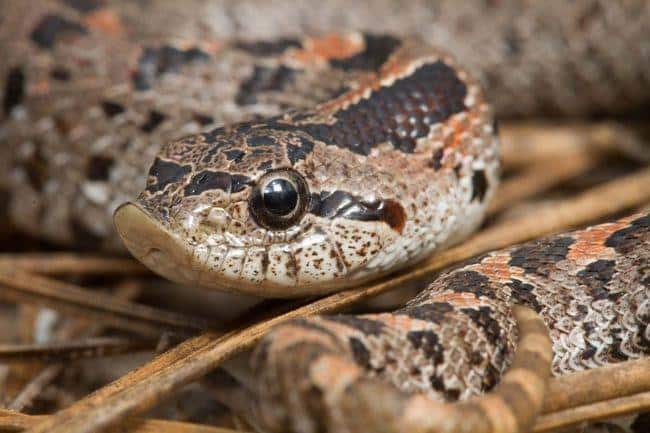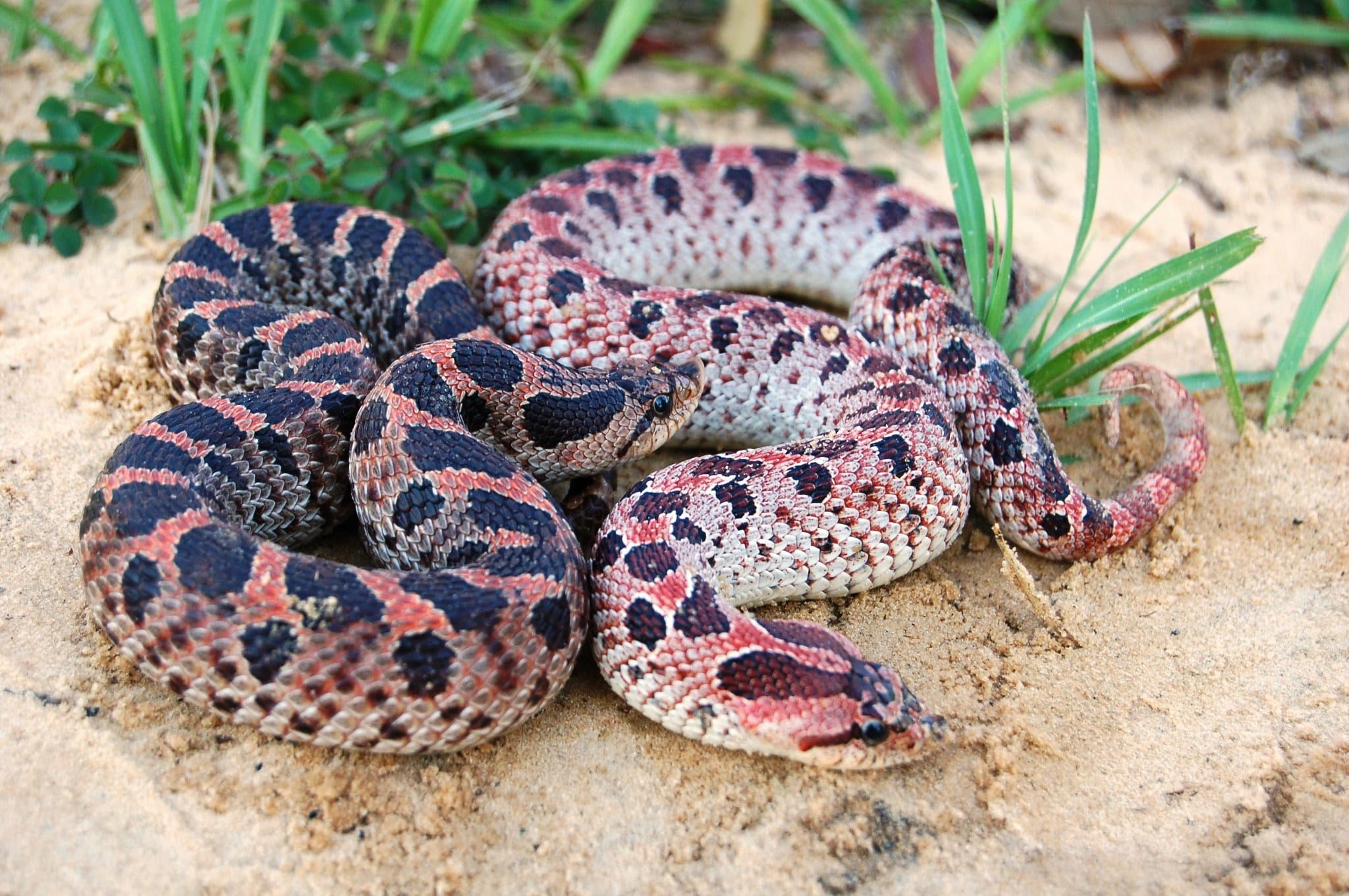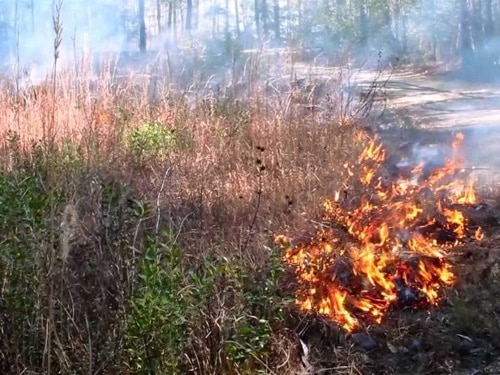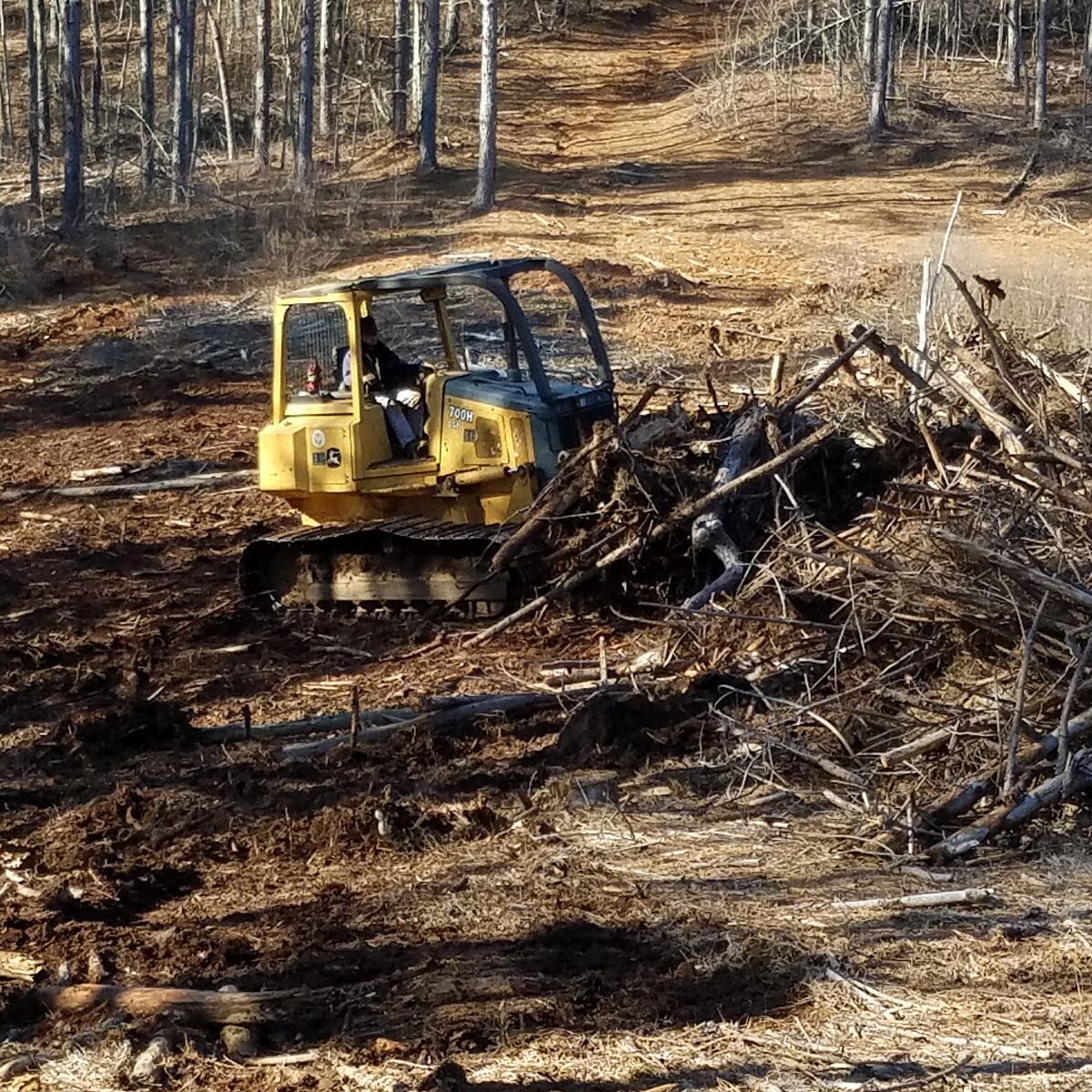Southern Hognose Snake
Heterodon simus
Status: Imperiled
The Southern Hognose Snakes range from gray, tan or a reddish color with dark brown or black spots on their back. They are about 12 to 21 inches in length and considered the smallest of the hognose snakes. The southern hognose snake has an upward pointing snout which usually sets them apart from most snakes.


Habitat & Range
The southern hognose snakes were historically found in the southern parts of the United States namely from North Carolina to Florida. As of today, they are only found in Georgia, South Carolina, North Carolina, and Florida. These hognose snakes are often found in sandhills, pine flatwoods, and coastal plain habitats. This species mostly prefer sandy soils and grassy understories. They live underground and come out only to feed.
Food Web & Energy Flow
The largest portion of the southern hognose snakes diet is consuming frogs and toads. Sometimes they may eat small lizards when they are easily spotted. In the back of their mouth they have enlarged teeth called rear fangs that are used to puncture inflated toads. They use mild venom to kill their prey instead of constricting.
Relationship to Fire
The southern hognose snakes use the grassy forest floor to find the toads and frogs they like to eat. When low-intensity fires are frequent, more vegetation is available which can increase the number of frogs and toads. The population of these hognose snakes can decline faster if fire suppression continues.

Conservation Status
The longleaf pine ecosystem has been experiencing fire suppression and habitat loss due to agricultural land uses. These factors have impacted the hognose snake habitat, causing them to become Imperiled.

Human Impacts/ Threats

Fear
Many people are afraid of snakes and kill them out of fear or concern for safety. The good news is that these snakes are not venomous and would rather not deal with humans.

Land Use Conversion
Longleaf forests and the habitat it supports is being cleared or converted to use the land for other uses like houses, roads, agriculture, and even to grow different types of trees to sell.
Resources
U.S. Fish & Wildlife Service. Hognose Snake
Savannah River Ecology Laboratory. Species Profile
Florida Museum. Florida Snake ID Guide
Amphibians & Reptiles of North Carolina. Southern Hognose Snake
